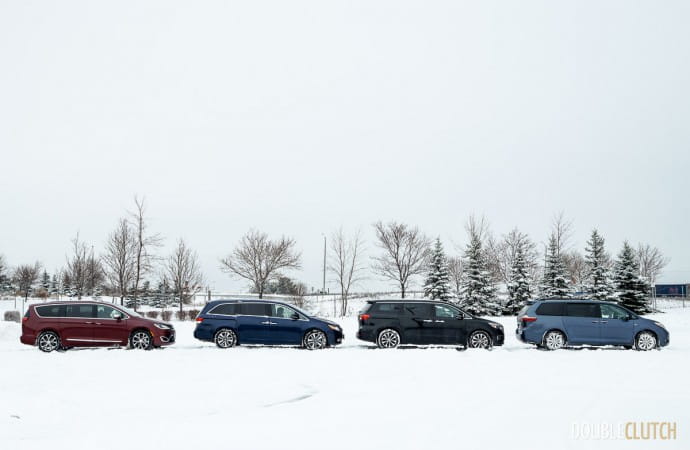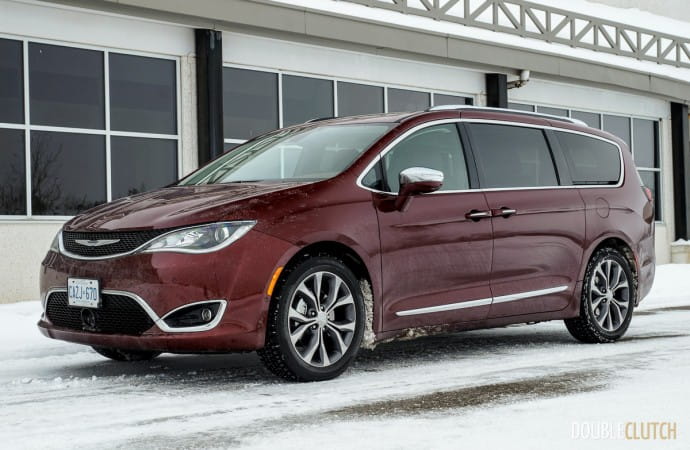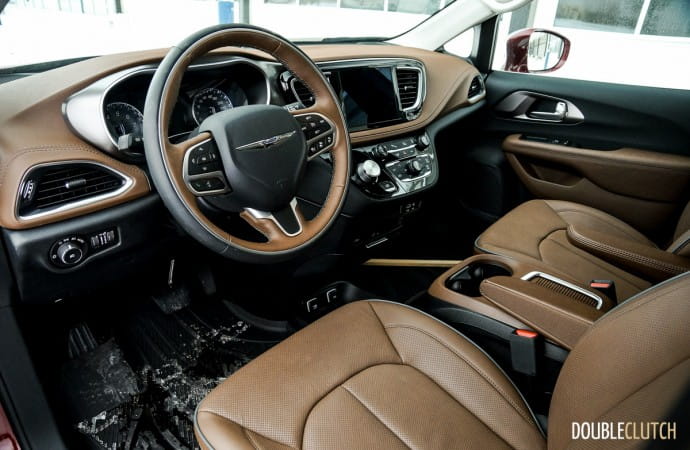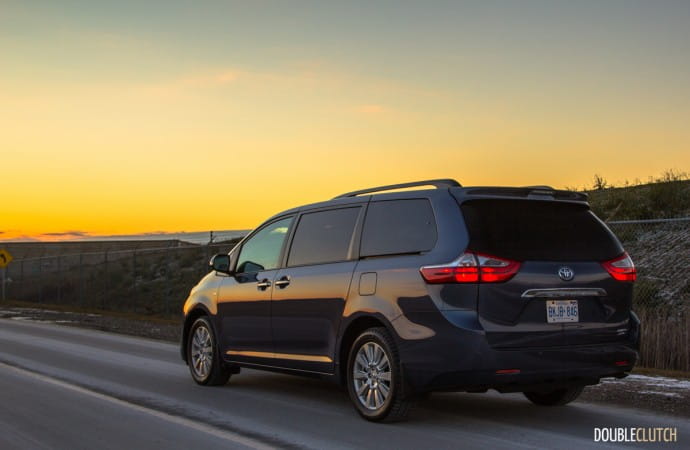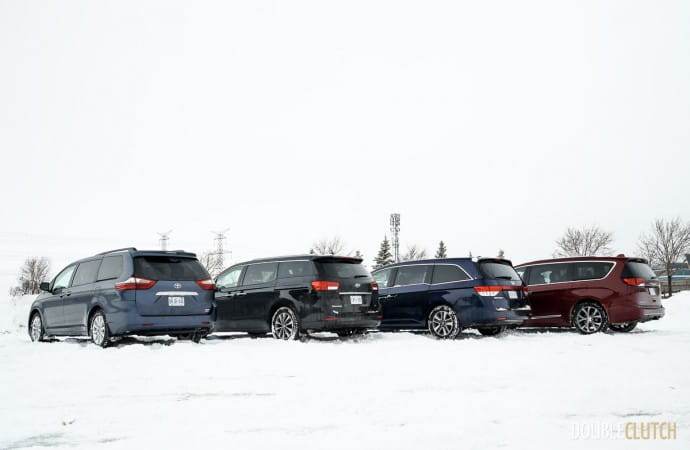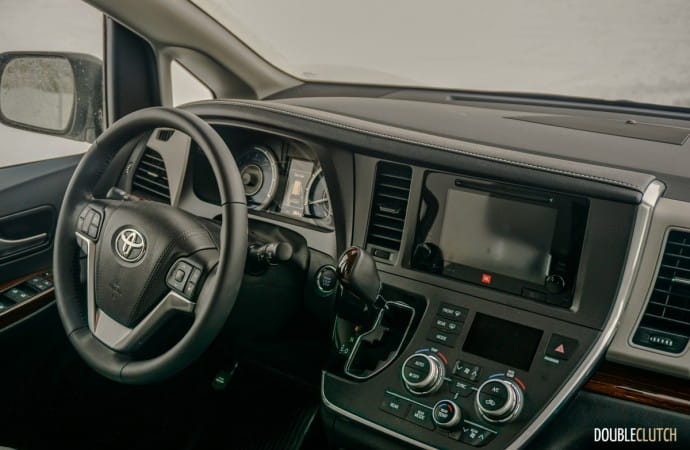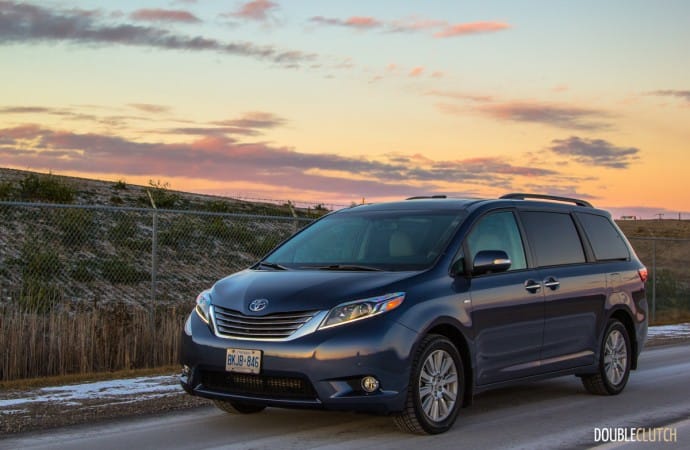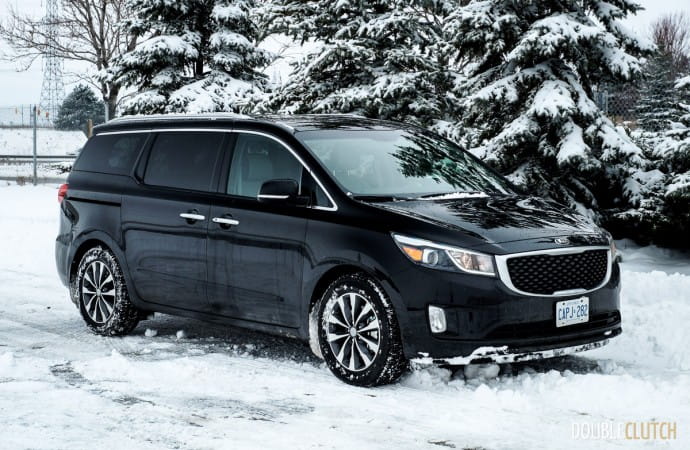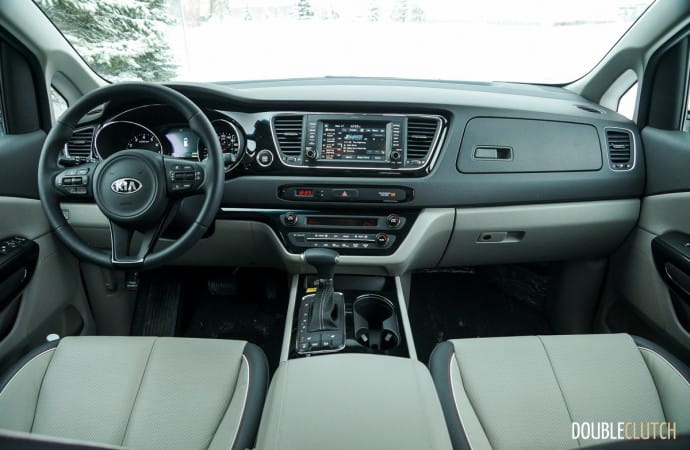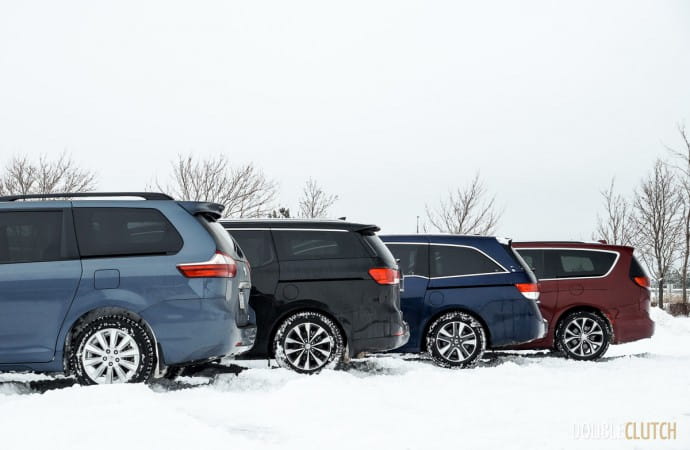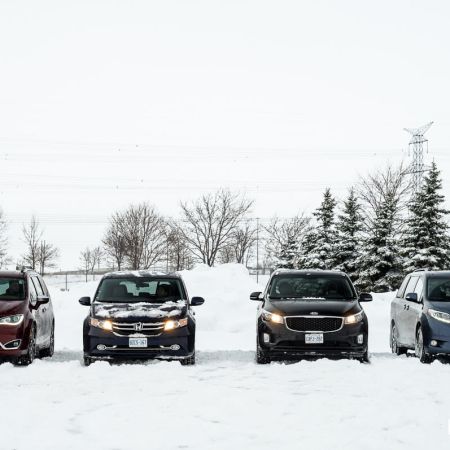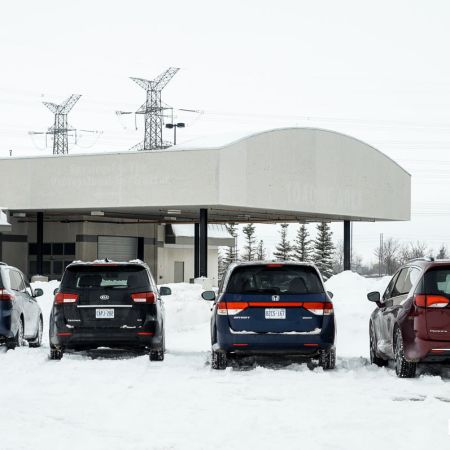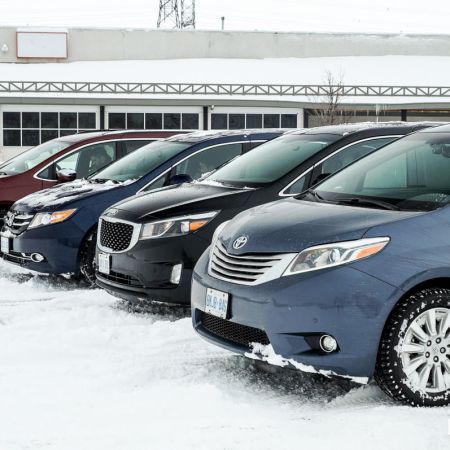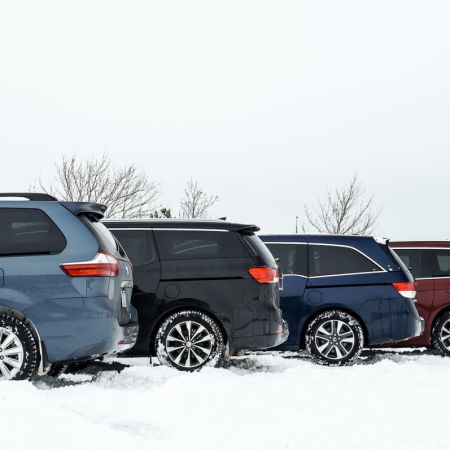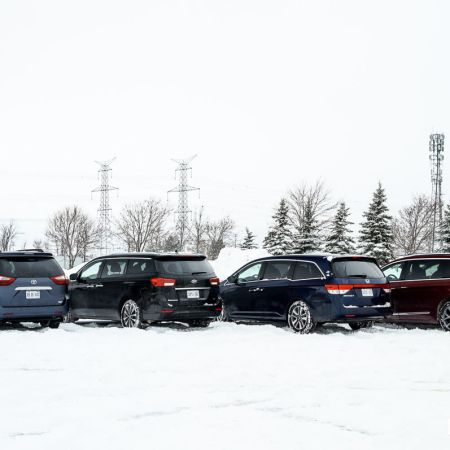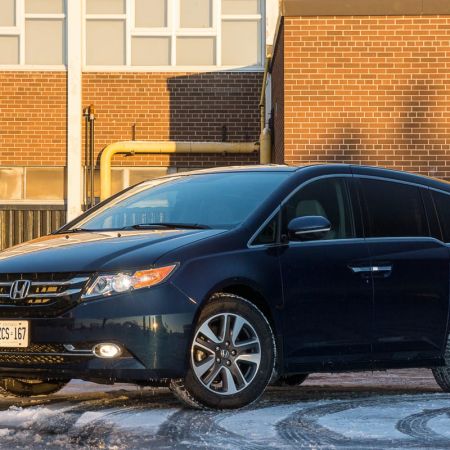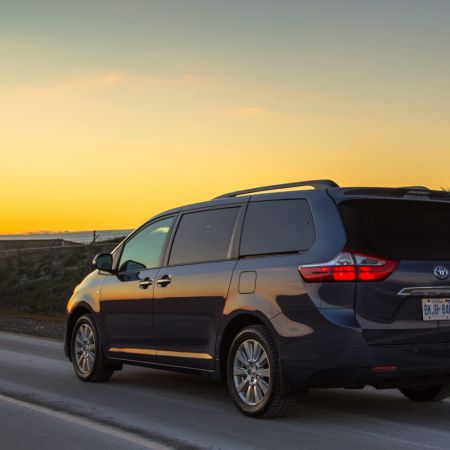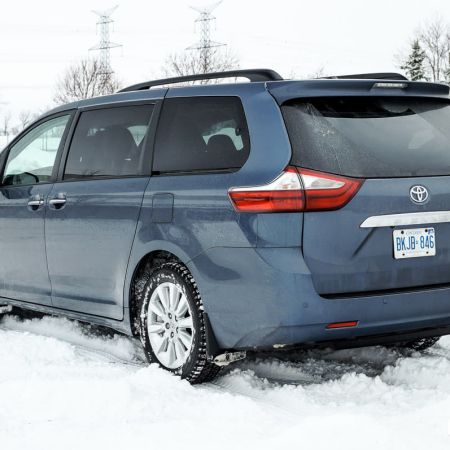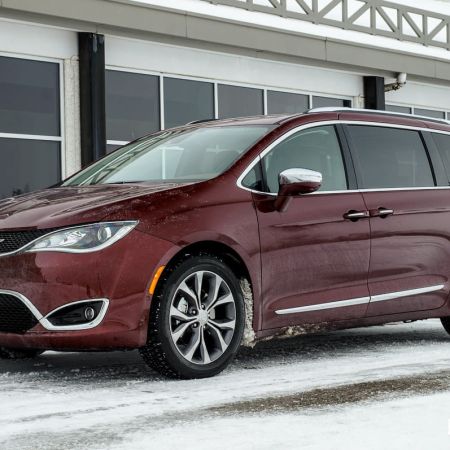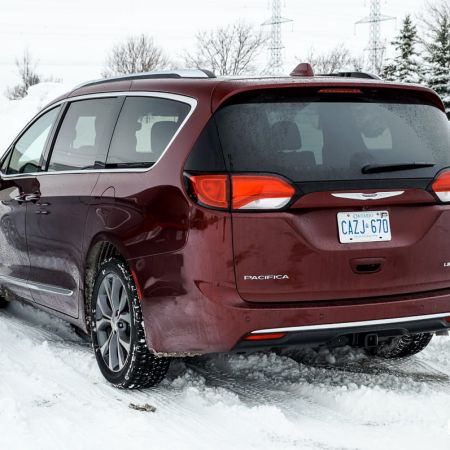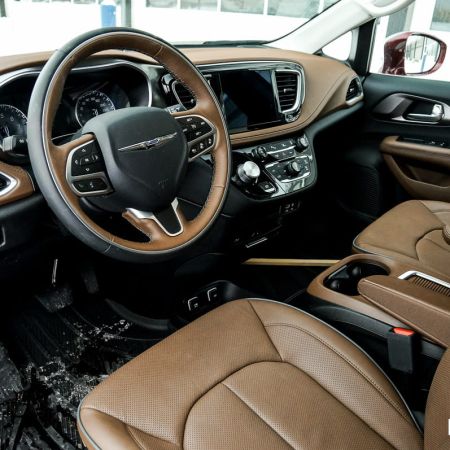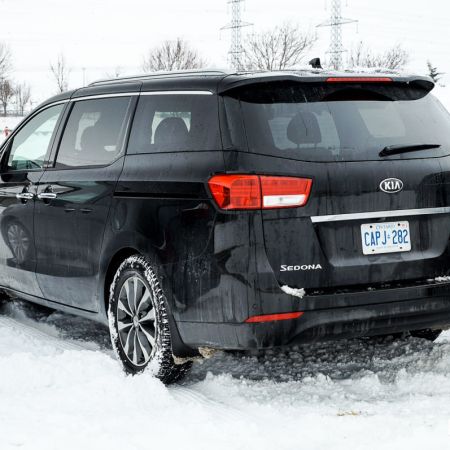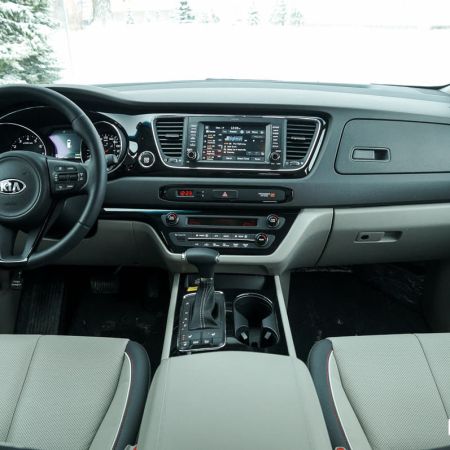Growing up in suburbia in the 1990s, minivans were by far the most popular family choice. At the end of a school day, I would walk out of my elementary school to a lot flooded with minivans and the distinctive sound of slamming sliding doors. As a car loving kid, I typically ignored all the vans, which were dismissed as ugly and boring, and that’s exactly what the majority of the buying base did, as the heyday of the minivan began to fade in favor of crossovers. Times have certainly changed, but the minivan isn’t done yet; there’s a new crop of players still offering families the most practical space for their buck, only now with levels of refinement way beyond that of their predecessors.
With the holidays approaching and families everywhere piling into their crossovers to make the rounds, we thought we would get the best of the crop together for a little face-off, and to see just how far these minivans have come. We each took a van of our choice for the week, which turned out to be the first extremely cold and snowy week of the year, and then got together for back-to-back comparison drives.
First up is the 2017 Honda Odyssey Touring. This generation still looks pretty good in my opinion; in fact I’d rate its looks second only to the brand new Chrysler Pacifica (reviewed here), with styling cues such as an up-kick in the side window trim that makes it more interesting to look at. The interior in the Odyssey is starting to show its age, and details like the cumbersome two-tier infotainment screens don’t help much either. That said, I like the driving position in the Honda and seating is pretty comfortable all around, including the third row. The third row ‘Magic-Seats’ are at least on-par with the Chrysler Stow’n’Go system; I only wish that the second row in the Honda were as flexible.
We all agreed that the strongest feature of the Odyssey is its powertrain. All Odysseys come standard with the time-tested and refined 3.5L V6 and its buttery smooth power delivery mated to the equally smooth six-speed automatic. The powertrain’s refinement helps the 248 horsepower feel like even more, and the Odyssey is capable of moving around with athleticism. Our biggest complaint from behind the wheel is dull steering with slow response, the only real negative remark for a very good-driving van.
After a week of mixed driving, heavy traffic and snowstorms, our Odyssey’s fuel economy meter sat at 12.0L/100km. The Honda is the only V6 in our test that comes with the fuel-saving cylinder deactivation feature, and taking advantage of that we’re confident that a long highway run would see overall indicated efficiency at better than 10L/100km.
The Odyssey (reviewed here) starts at a fair $30,790, and comes in a whopping seven different trim levels, so you’ll surely be able to find the right one for your family’s needs and budget. Our particular tester came in the fully loaded Touring trim, pushing the price up to a rather expensive $48,890. That’s $6,000 more than the next step down, an EX-L Navi, and for your money you get upgraded 18” wheels, rear entertainment, and a vacuum cleaner called the HondaVac stowed in the back.
Next up is the all-new 2017 Chrysler Pacifica. Why Chrysler decided to revive the old Pacifica name I’ll never know, but the van itself is very good looking inside and out. During our test, the Pacifica was definitely the styling standout, with flowing lines and a more modern look and feel than the others. That theme is carried inside as well with a very high-tech and clean looking dashboard, and an open airy sense inside the cabin, aided by the optional panoramic glass roof.
It’s obvious that the Pacifica was built with the ultimate interior functionality in mind; it’s loaded with storage cubbies, hidden compartments, second and third row Stow’n’Go seats (with power operation for the third row). All of the seats in our tester were finished in soft Nappa leather, and featured ventilation up front, although the third row felt slightly more cramped than some of the others. Up front, the driving position is adequate for most but a bit awkward when compared to the Honda.
The Pacifica is powered by the Pentastar 3.6L V6, putting out a healthy 287 horsepower through the nine-speed ZF automatic transmission. The van does feel fairly agile, especially for a van, but the Pentastar’s lack of low-end torque does contribute to some sluggishness in the city. The nine-speed has been a bit controversial, and some jerkiness was apparent during our testing. This was especially noticeable when getting on the throttle at low speeds. While it’s not the most dynamic to drive of the bunch, the Chrysler does offer one of the quietest and softest rides of the lot, which is likely more important to most minivan shoppers.
The nine-speed transmission does help efficiency, there’s no disputing that, and the Pacifica netted the best average fuel economy for the week at 11.5L/100km, and actually has a very impressive 8.4L/100km highway rating. The Pacifica is also the most expensive on the test, with a starting price of $38,995 for a base model Touring trim van (reviewed here), and up to $51,995 for a top of the line Limited like our tester. Keep checking option boxes on the Limited trim, and you can actually put the MSRP north of $60,000 for this van, and it would still be lacking the AWD offered by the Toyota.
Of course, that money does get you a seriously well-equipped van with enough gadgets to keep the neighbourhood kids impressed for quite a while, if that’s your thing. Like the Honda, the Pacifica does come with a built in vacuum, known as the Stow & Vac. However, it’ll cost you a spare tire, which can be replaced by an accessory for $295. The Pacifica is a noble effort from Chrysler, the company responsible for the genesis of the minivan, and goes a long way to bringing the segment into the future. Being on the leading edge doesn’t come cheap, however.
The van that was in the most demand during our snowy test week was the 2017 Toyota Sienna Limited AWD, even if strictly for its all-wheel-drive capabilities and beefy winter tires that had been fitted. The third-generation Sienna was designed with a conservative mindset – space management and overall quality was prioritized over design. It’s not an unattractive van, but will very easily blend into the sea of other three-row vehicles at the local hockey rink, elementary school, or dance class.
The interior in our top of the line Sienna was equipped to please despite the overall age of the platform. Ergonomics are good, and the interior is lined with nice soft-touch materials, real leather, and faux-wood trim. Everything fits nicely and is reflective of Toyota’s consistent quality. Ergonomics are also pretty good with a comfortable driving position atop soft leather seats and easy-to-understand controls.
Toyota’s third row is one of the roomiest on our test, but the age of the Sienna’s platform started to show as we evaluated some of the functionality. The rear seats cannot be heated, there’s no on-board WiFi, and there’s only one USB port. Unlike the Pacifica and Odyssey, there is no vacuum cleaner available. Toyota doesn’t offer fold-flat second row seats either, but they can be easily removed and are reasonably light.
What is brand new in the Sienna is the powertrain. The 3.5L V6 is shared with the new Highlander, codenamed 2GR-FKS. It puts out 296 horsepower coupled to a new eight-speed automatic, and the results are delivered smoothly and crisply. Throttle response isn’t the sharpest, but once the pedal is depressed enough, the Sienna has plenty of get-up-and-go, easily the most rewarding acceleration in the segment. The issue is actually getting the minivan to understand that you want it to hustle – the accelerator must be pushed right to the floor to evoke any sort of response.
Our Sienna tester was also equipped with a slip-and-grip all-wheel-drive system. It’s still front-biased, but this is the only minivan that can be had with AWD at all, something that Canadian shoppers have shown time and time again that they want. As far as road manners go, the Sienna is probably the firmest riding van on our test, which may be fine with some drivers, but others might prefer something a little smoother to cart the family around. We also noticed a bit of rattling from the second row seats, an issue that seems to be common to the Sienna.
The all-wheel-drive system does add a bit of weight, resulting in a fuel mileage penalty. Over the course of our test, the Sienna returned 13.8L/100km, draining the 75L tank in a deceptively quick manner. In comparison to the other vans, which were tested in similar weather conditions, the Sienna makes the penalty paid for the privilege of AWD all too obvious.
Toyota prices the Sienna from $33,420 for the base model, though the XLE AWD starts at $44,130. All-wheel-drive can be had on the LE trim, for as little as $39,580. Our test vehicle adds the $7,315 Limited Package, bringing the price to $51,445. For this you get front heated seats, JBL Synthesis audio, dual-screen rear BluRay capability, 16.4” widescreen monitor in the back, dual power sunroofs, wide-angle reverse camera, HID headlights, premium leather seats, and many other niceties. At the end of the day, it does feel more luxurious than the Honda, which compares at only a couple thousand less, and without AWD.
Lastly, the dark horse on our test is the 2017 Kia Sedona (reviewed here). The Sedona was built with young families in mind and that’s reflected in almost every aspect of the van. The styling is sharp and modern, but not a big departure in any from the typical minivan shape and design. It tends to look a bit generic, although I’d call it downright elegant compared to the Toyota. The interior is everything I’ve come to expect from Kia’s of recent; easy to use controls and infotainment, a solid list of luxury features and a pleasant overall aesthetic.
Though, the Sedona suffers from a general cheapness in the materials and final fit and finish. Much like the other vans, there is an abundance of storage compartments, high-quality leather seats, and plenty of room for everyone. The third row seats do fold flat, with a quick and easy release system, while the second row only tilts and slides forward. What the second row does offer is kick-out foot rests that make passengers feel like they’re lounging in their living room.
The Sedona is powered by a 3.3L V6 that puts out 276 horsepower, right in line with the other vans in this test. Power is sent to the front wheels through a quick shifting six-speed automatic, and unlike the Toyota, throttle response is surprisingly sharp. That sharp response actually makes the van feel nimble in the city, though the steering remains numb. The Sedona also rides very well and composed both in the city and at highway speeds, making it easy to melt away the miles. A little more insulation from wind and road noise would go a long way to making the Sedona feel a little more premium on the road.
Fuel economy was second best on our test, and the economy readout sat right at 11.8L/100km at the end of our week with it. Much like the Chrysler and Honda, I am sure numbers in the sub-10L/100km would be possible in better weather and with more highway driving. The Kia is also the cheapest on our test with a starting price of $27,995, ranging up to $46,695 for a fully loaded SX-L+ model, a model which features the latest safety tech such as autonomous braking and adaptive cruise control.
Our tester, which was actually my vehicle for the week, was a mid-range SX+ model with an MSRP well below the others at $36,695. The SX+ is what I would consider the sweet spot in the lineup as it gets you all the most important features like heated leather seating, power doors, smart key, blind spot monitoring, etc., without going overboard.
This current crop of vans is light years ahead of the minivans I remember from my childhood, and there’s no doubt in my mind that they do offer more utility for your money than a crossover. It’s pretty hard to go wrong with any of them. If you’ve got your heart set on AWD, the Sienna is a great choice, and it also offers plenty of upscale features. Set your budget and figure out which one appeals to you the most; I know I’d favor low cost, space management, and efficiency in this segment.

